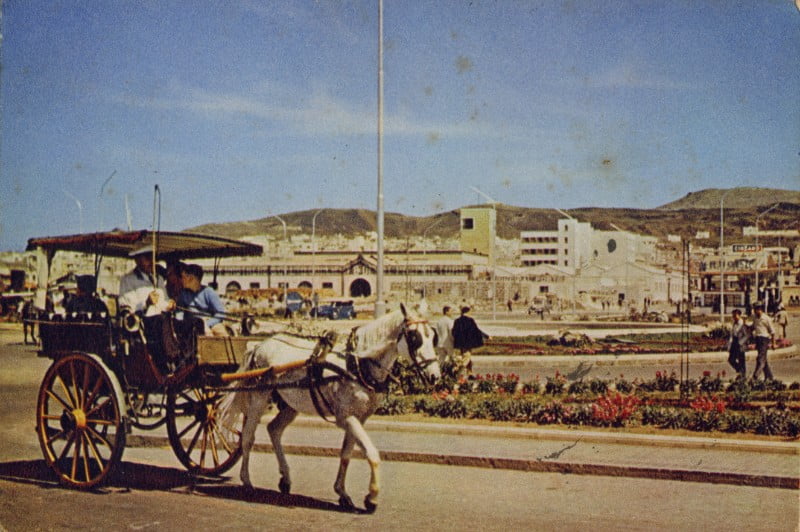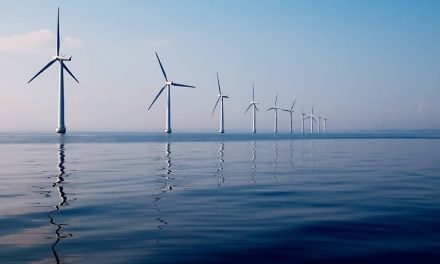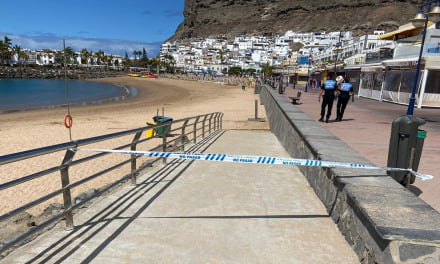 The Tartanas were, for hundreds of years, a common feature on the streets and dock sides of Las Palmas, as was the case elsewhere in the world, these highly manoeuvrable two steel-rimmed wooden-wheeled traps, pulled by horses, mules or mares, served as the primary transport of passengers and boat crews between the natural harbour of La Isleta and the ever-growing colonial outpost of El Real de Las Palmas nearly three miles away.
The Tartanas were, for hundreds of years, a common feature on the streets and dock sides of Las Palmas, as was the case elsewhere in the world, these highly manoeuvrable two steel-rimmed wooden-wheeled traps, pulled by horses, mules or mares, served as the primary transport of passengers and boat crews between the natural harbour of La Isleta and the ever-growing colonial outpost of El Real de Las Palmas nearly three miles away.
Sand dunes, a long dusty dirt track and wide open plantations separated the administrative capital from the harbour which was protected by the cannons of the Castillo de La Luz (Castle of Light).
 The original Port of Las Palmas was at San Telmo, at one end of the city wall, protected by artillery from Castillo de Mata (Castle of Death) at the other end of the wall. The earliest settlers of Triana used the San Telmo jetty to land goods and people, however it was not ideally placed, with strong prevailing winds and rough seas very often preventing loading and unloading directly into the burgeoning merchant district, and so the preferred harbour became the naturally sheltered bay of La Isleta. This became known as the Puerto de La Luz de Las Palmas, only officially becoming the Port of Las Palmas quite recently, following the construction of the Avenida Maritima in the 70s, which block in San Telmo.
The original Port of Las Palmas was at San Telmo, at one end of the city wall, protected by artillery from Castillo de Mata (Castle of Death) at the other end of the wall. The earliest settlers of Triana used the San Telmo jetty to land goods and people, however it was not ideally placed, with strong prevailing winds and rough seas very often preventing loading and unloading directly into the burgeoning merchant district, and so the preferred harbour became the naturally sheltered bay of La Isleta. This became known as the Puerto de La Luz de Las Palmas, only officially becoming the Port of Las Palmas quite recently, following the construction of the Avenida Maritima in the 70s, which block in San Telmo.
The skilled trap drivers, known as Tartaneros, were tasked with expertly guiding their horses, and the vehicles they pulled, around the various obstacles to be found on what was to become one of the world’s busiest and most important oceanic ports. As the administrative capital, along with its mercantile activities, expanded, so the Tartaneros ensured the safe delivery of passengers and cargo between the bay of La Isleta and the hustle and bustle of the first major Spanish Atlantic colony.
Las Palmas quickly became the primary staging post between the New World, Africa and the unified Iberian peninsular Kingdom of Spain, the last chance for Galleons and Carracks alike to replenish their stores before the perilous journey to the Americas and later a major trading port for agricultural goods as well as the last steamer stop home from the British Imperial colonies and other territories around the world.
 The British understood the value of such a port well, and merchants began to arrive on these shores early on, not always were they welcomed. But by the 17th and 18th centuries not only were British companies setting up shop to produce and export wines, but the very first British tourists were beginning to arrive to take advantage of the climate and the natural springs, most of whom would have remembered well their bumpy Tartana transfer from port to city and back again. By the 19th century several British families were setting up businesses on the island, transporting among other goods cochineal for red dyes, tobacco, bananas and coal, leading to a boom with the onset of the age of steam.
The British understood the value of such a port well, and merchants began to arrive on these shores early on, not always were they welcomed. But by the 17th and 18th centuries not only were British companies setting up shop to produce and export wines, but the very first British tourists were beginning to arrive to take advantage of the climate and the natural springs, most of whom would have remembered well their bumpy Tartana transfer from port to city and back again. By the 19th century several British families were setting up businesses on the island, transporting among other goods cochineal for red dyes, tobacco, bananas and coal, leading to a boom with the onset of the age of steam.
 The first half of the twentieth century saw the Tartanas continue to play a most important role in the transit between the port and the old town districts of Vagueta and Triana, loading goods and people before the onslaught of the motor vehicle, faithfully and sure-footedly making possible the connections and developments between the commerce and the agriculture of Las Palmas de Gran Canaria, the sea and the wider world beyond.
The first half of the twentieth century saw the Tartanas continue to play a most important role in the transit between the port and the old town districts of Vagueta and Triana, loading goods and people before the onslaught of the motor vehicle, faithfully and sure-footedly making possible the connections and developments between the commerce and the agriculture of Las Palmas de Gran Canaria, the sea and the wider world beyond.
They carried on being a common sight into the 60s and 70s, though ever-more reminiscent of times gone by, they continued by providing a quaint colloquial thrill for the newly arriving tourism of the jet age; until the last tartanero in the late 70s lost his horse in a traffic accident, and these carriages ceased to be seen in the capital at all. Most thought they were gone for good.
The tartana tourist trade was revived in 2014, as part of the ongoing tourism infrastructure and development around the cruise ship port, El Muelle, Las Canteras and the Parque Santa Catalina. These Valencia-built carriages for hire, nowadays sport 4 wheels and rubber tires. Their operation is strictly regulated, under European legislation, and the welfare of the animals that pull them needs to be held in the highest priority.
While many tourists do not object to well looked after working animals, Las Palmas tourism would soon feel the wrath of public anger were these beautiful beasts ever discovered to not be cared for properly or were they seen to be abused in any way. Of course there are many who feel this is simply an outmoded abuse of the animals, who we should no longer require to pull heavy loads for our entertainment, and indeed the Canary Islands animal welfare laws are slowly moving toward a position of agreement.
For now, so long as high standards are being visibly maintained, and the horses well cared for and seemingly happy, the Tartanas of Las Palmas will likely continue to provide an echo of the island’s past for some years to come, as well as being an attractive way for visitors to see parts of the old port area as it gradually gains popularity as a shopping, culture and leisure district.
Images courtesy of FEDAC and LPAvisit










